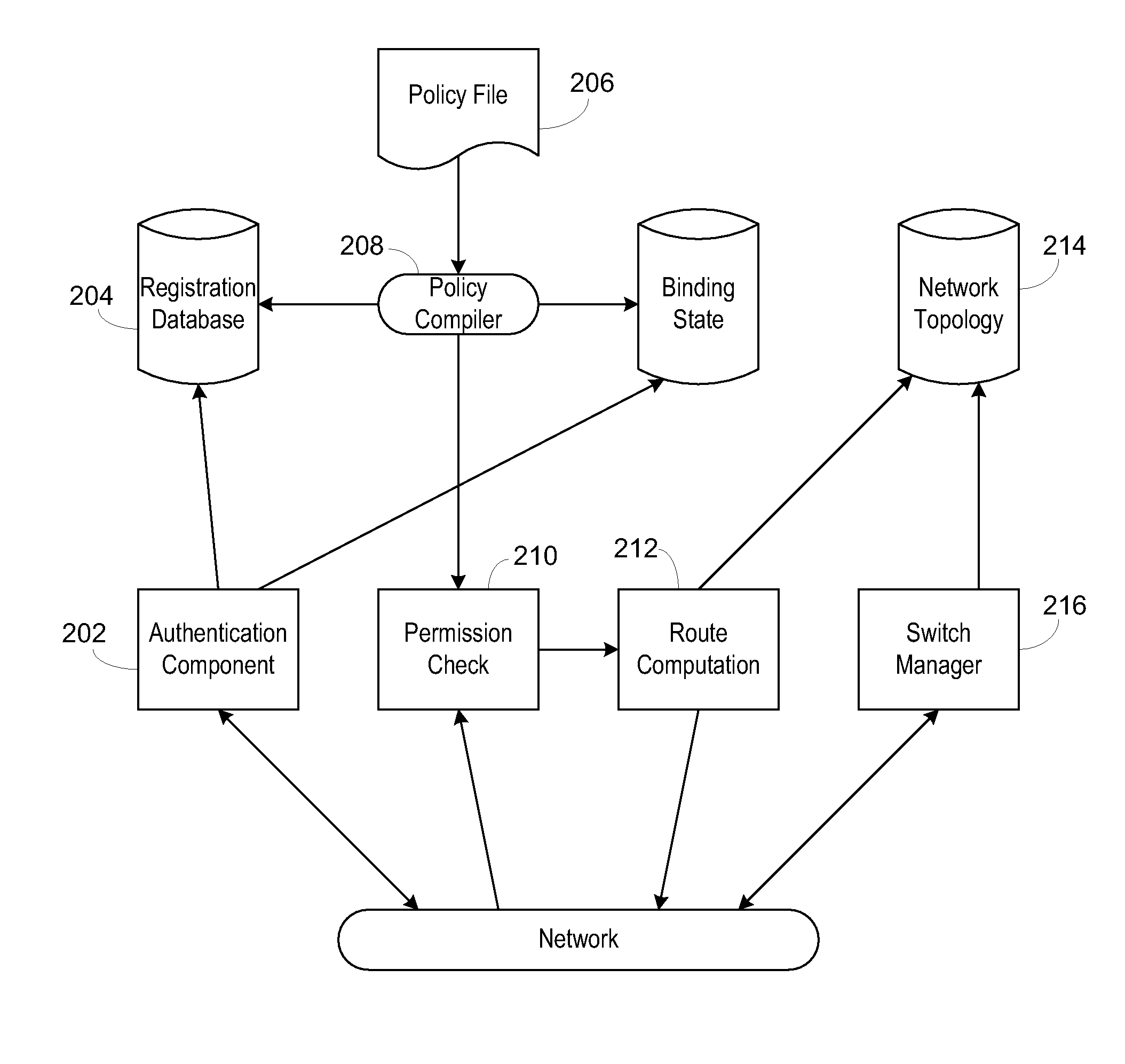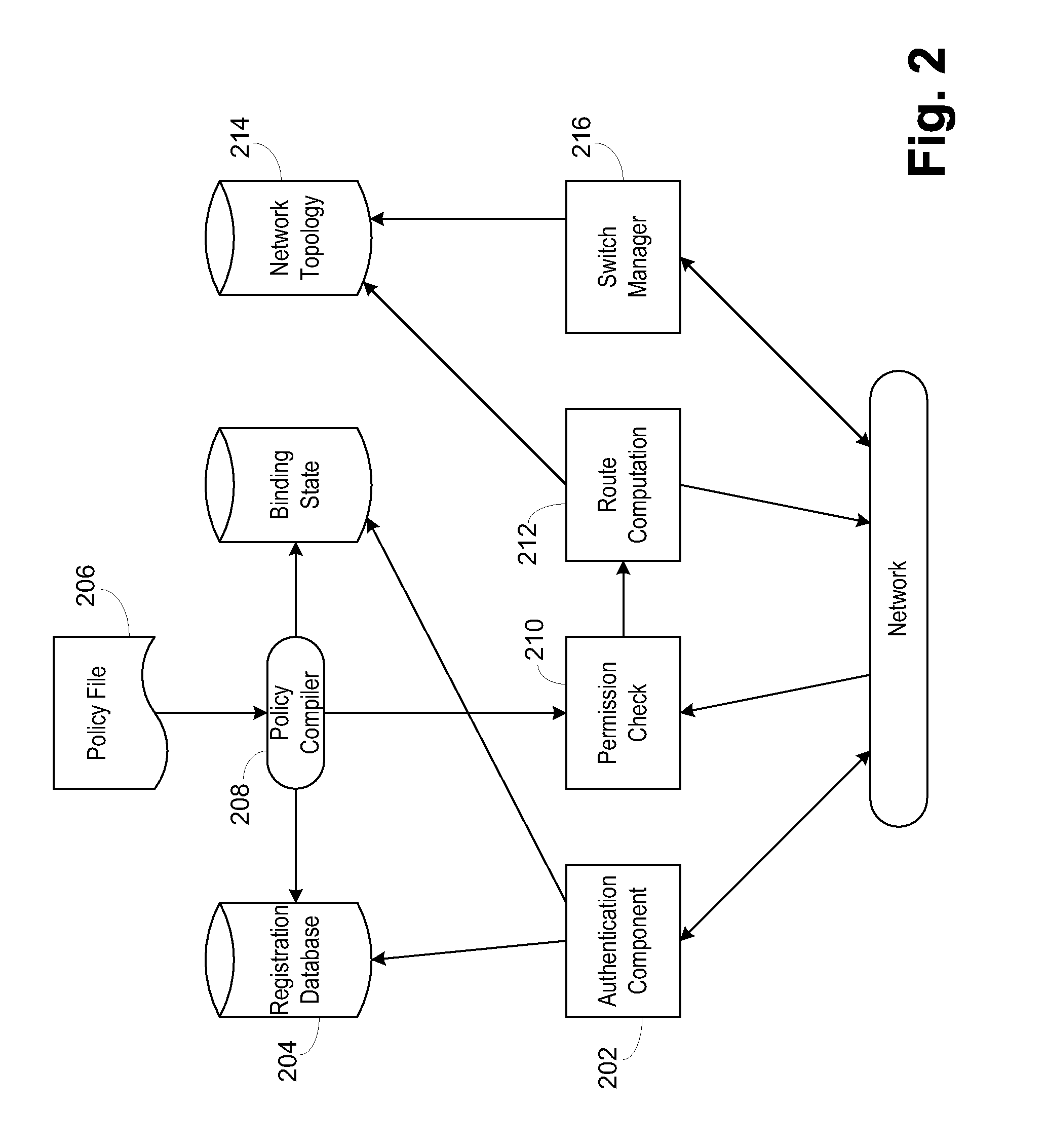Secure network switching infrastructure
a network packet switching and network security technology, applied in the field of network packet switching, can solve the problems of reducing the trusted computing base and limiting the consistency protocol protection of highly trusted entities, and achieve the effect of improving the overall network security
- Summary
- Abstract
- Description
- Claims
- Application Information
AI Technical Summary
Benefits of technology
Problems solved by technology
Method used
Image
Examples
Embodiment Construction
[0037]Referring now to FIG. 1, a network 100 according to the present invention is illustrated. A controller 102 is present to provide network control functions as described below. A series of interconnected switches 104A-D are present to provide the basic packet switching function. A wireless access point 106 is shown connected to switch 104A to provide wireless connectivity. For the following discussion, in many aspects the access point 106 operates as a switch 104. Servers 108A-D and workstations 110A-D are connected to the switches 104A-D. A notebook computer 112 having wireless network capabilities connects to the access point 106. The servers 108, workstations 110 and notebook 112 are conventional units and are not modified to operate on the network 100. This is a simple network for purposes of illustration. An enterprise network will have vastly more components but will function on the same principles.
[0038]With reference to FIG. 1, there are five basic activities that define...
PUM
 Login to View More
Login to View More Abstract
Description
Claims
Application Information
 Login to View More
Login to View More - R&D
- Intellectual Property
- Life Sciences
- Materials
- Tech Scout
- Unparalleled Data Quality
- Higher Quality Content
- 60% Fewer Hallucinations
Browse by: Latest US Patents, China's latest patents, Technical Efficacy Thesaurus, Application Domain, Technology Topic, Popular Technical Reports.
© 2025 PatSnap. All rights reserved.Legal|Privacy policy|Modern Slavery Act Transparency Statement|Sitemap|About US| Contact US: help@patsnap.com



